Amazfit Cheetah Pro review: A Garmin Forerunner Lite with more bells and whistles
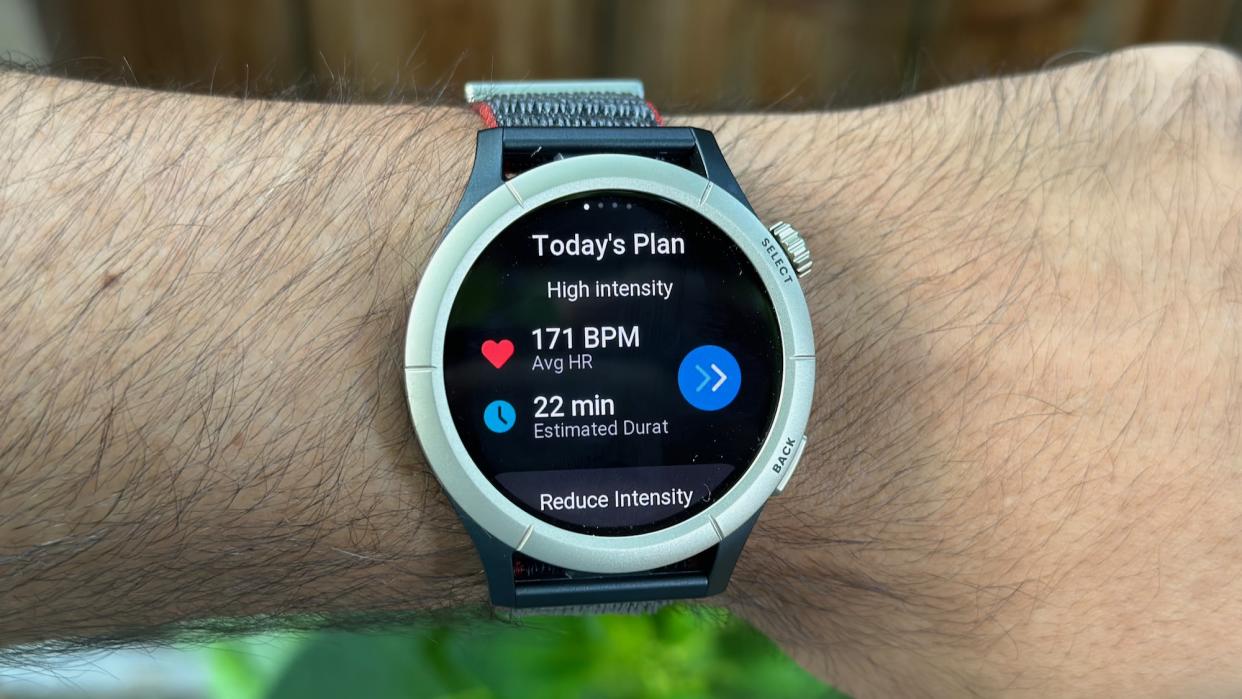
Amazfit has come a long way from its early days of budget Apple Watch lookalikes and Xiaomi Mi Band clones. It strikes a unique balance with its fitness tech, offering similar fitness data and battery longevity to what you get in a Garmin watch, only with more mainstream watch features packed in at a lower price.
Its new high-end fitness smartwatch focus is really apparent in the Amazfit Cheetah Pro, the brand's first watch "engineered for runners." I had a chance to test both the Cheetah Pro and the Amazfit T-Rex Ultra, and immediately preferred the Cheetah Pro for its comfortably light design and focus on affordable GPS accuracy.
Sunday Runday
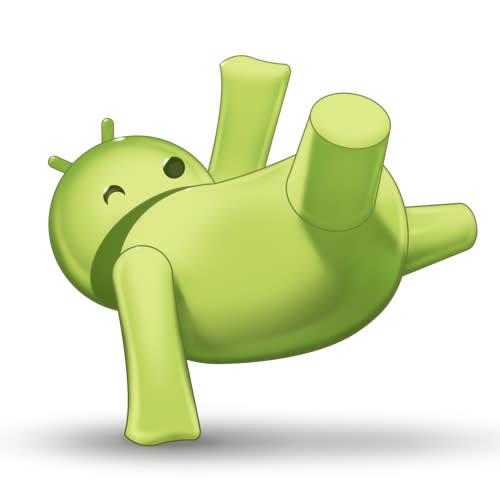
In his new weekly column, Android Central Fitness Editor Michael Hicks talks about the world of wearables, apps, and overall fitness tech related to running and health.
Available for $299.99 — with the Cheetah Round $80 cheaper with some trade-offs — it undercuts popular running watches like the $349 COROS APEX 2 and Garmin Forerunner 255 while surpassing them in key areas, such as the built-in mic and speaker. It's honestly surprising how much tech Amazfit manages to pack into its watches.
That being said, the Cheetah Pro isn't for everyone. Amazfit is targeting runners who may not want to spend a huge amount of money; but are there better compromises available in this price range? Or if you like what it offers, should you just bite the bullet and spend a little extra on other running watches? Let's run through the key points you need to know.
Amazfit Cheetah Pro specs and design
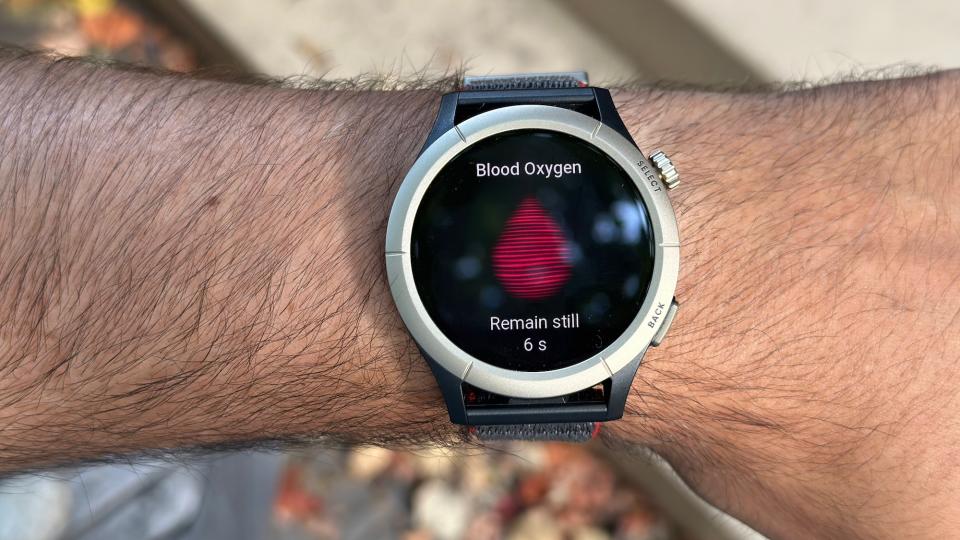
Purely based on the numbers, the value that you get out of this $300 running watch is fantastic.
The AMOLED display is nearly as large as you get from the 47mm Galaxy Watch 6 Classic, while the weight is closer to what you'd expect from a 1.2-inch watch. That's partially because Amazfit used a nylon strap instead of silicone, but it's still appreciated. Plus, the display matches the industry-standard 330 pixels per inch and is surrounded by a sleek titanium bezel, which masks the fiber-reinforced plastic beneath.
My only skepticism is with the display's claimed 1,000 nits of max brightness. I'm not sure when that maximum kicks in, but the watch is best viewed indoors or in the shade. In sunny spots, it's perfectly readable but not at all vibrant — especially for the data screen graphs you'll see in the Cheetah Pro review photos. Still, it's much better than a Garmin MIP display, so I couldn't complain much.
The watch itself has two buttons — one a digital crown — and comes with a nylon band that's a little narrow when sliding my fist through it. Most runners have strong opinions about crowns and nylon straps, so that could influence your opinion.
I found the strap a little scratchy for my liking; the crown is perfectly fine, though it feels like Amazfit tuned it so you have to turn it pretty far before it moves you to the next data screen during a run. Thankfully, you can use the touchscreen outside of workouts.
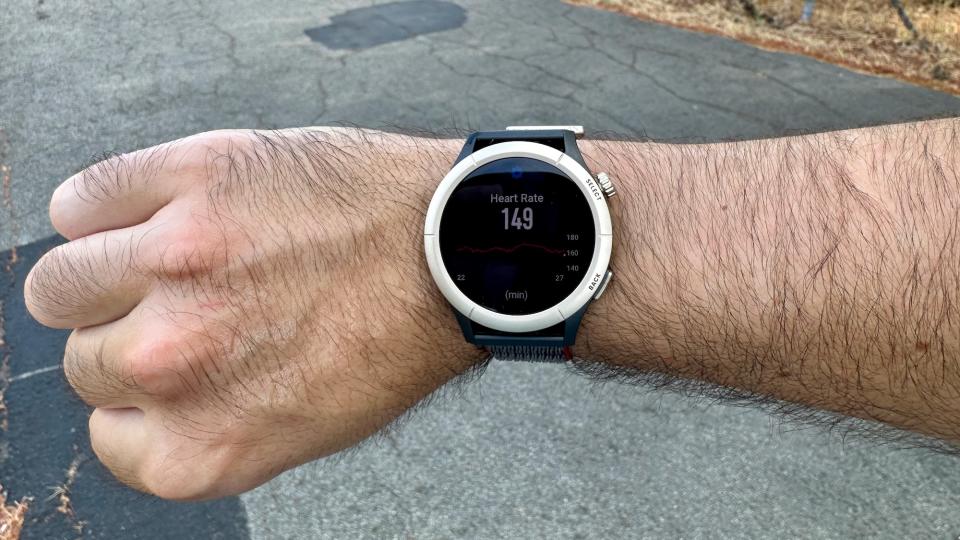
The Amazfit Cheetah Pro battery life is (on paper) as long as a Garmin watch, except with the visual perk of AMOLED. In practice, consider me very dubious that this watch can hit 26 hours of tracking with Accuracy Mode active. The much larger Garmin Forerunner 965 only hits 19 dual-frequency hours, and I found that the Cheetah Pro dips nearly 10% after about 90 minutes (on pace for 16 hours or so). Still, this watch battery is more than good enough to trust for an all-day race, and that's what counts.
What makes the Cheetah Pro especially intriguing is its built-in mic and speaker, something that's fairly rare for fitness-focused smartwatches. This makes it a rival to devices like the Fitbit Versa 4 or Garmin Venu 2 Plus. With these, the Cheetah Pro can take Bluetooth phone calls or speak to a voice assistant, which you can trigger by twisting your wrist or holding down the right button.
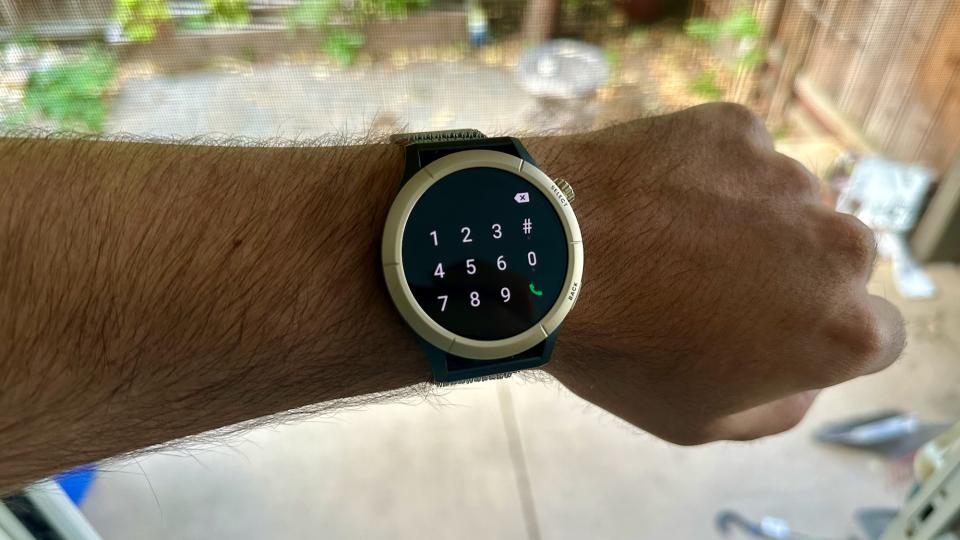
Testing the calling for myself, I found that the Cheetah Pro mic works quite well, really picking up my voice even if I'm not directly holding the watch near my mouth. The speaker, unfortunately, is really quiet. It's audible in silent areas, but you're probably going to ask the person to speak up. This was a problem I noticed with the pricier Venu 2 Plus, but not a traditional smartwatch like the Galaxy Watch 6.
As for the Alexa access, this seems to be the norm now that Google is restricting Assistant to the latest Wear OS models. I'm not one to care much about voice assistants, but if you want to twist your wrist, say "Start outdoor workout," and arrive on the Start screen without having to use any buttons or swipes, you're in luck.
The Amazfit Cheetah Pro also has music storage, but no NFC tap-to-pay option.
Just how accurate is the Cheetah Pro and Zepp Coach?
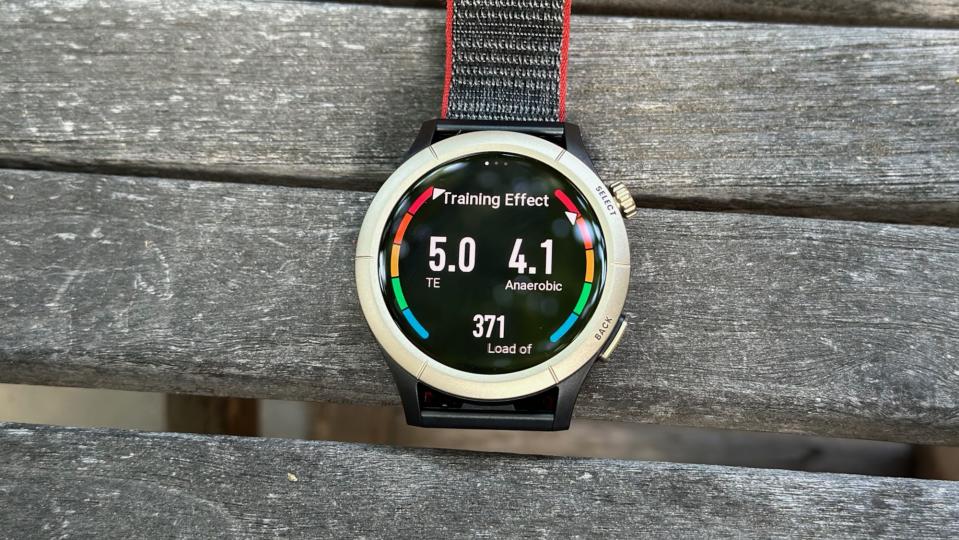
I'm waiting (im)patiently for more smartwatch brands to add data on training load and recovery, along with suggested workouts based on your fitness. Amazfit is one of the few that does, and it now has something called Zepp Coach AI to suggest workouts based on your current fitness level.
Personally, I look like Futurama's Fry narrowing his eyes in suspicion any time a company tries to incorporate "AI" into their workflow. But the concept really isn't that different from the Garmin algorithm that goes into calculating your VO2 Max and other data, based on your GPS and heart rate data. The question is, can you trust Zepp Coach as much as more well-known brands?
Amazfit's bragging about its "industry-leading" MaxTrack GPS is just marketing. In your post-run results, you'll see your fair share of drifting and suspiciously angled lines. But it's also not nearly as bad as a GPS-only watch like the Galaxy Watch 6, and it followed along fairly closely with my Forerunner 965 map with some occasional deviations. Considering it costs half as much, I'm pretty happy with the compromise.
What I'm more concerned about — the same concern I had during my Galaxy Watch 6 testing — is how the Cheetah Pro registered much less climbing and descending than my Forerunner 965, by a scale of hundreds of feet. I noticed after my last run that it had "altitude calibration" turned on, which is supposed to be disabled by default in Amazfit models with altimeters. This makes me wonder if it's just guessing my elevation gain based on "publicly available data" rather than tracking it itself.
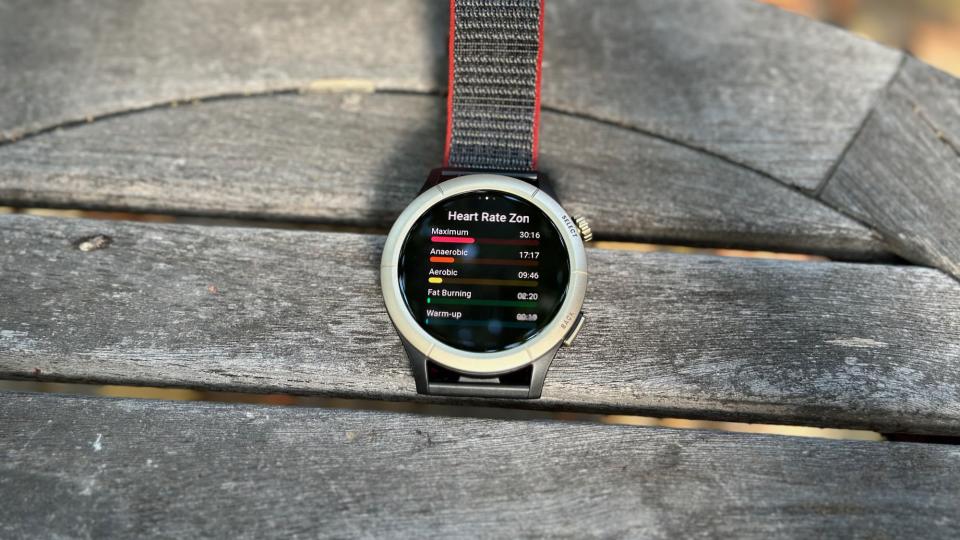
In terms of my heart rate data, my averages and max heart rates across several runs were 1bpm lower. That makes it pretty consistent; I wonder if it has to do with the nylon strap, which lets you wear it a little looser than you usually get with a silicone strap.
Overall, I found that Amazfit overestimated my training load compared to Garmin, but this is in part because of a shorter sample load of data and because I started running with it when I was "overtraining" according to Garmin, making me look less fit to Zepp's algorithms.
Interestingly, both watches still gave me the same 72- and 31-hour recovery time estimates at the end of my two runs (respectively), which makes me optimistic that Zepp Coach won't ever advise runners to push themselves before they're ready. And it recommends specific types of workouts — like hitting high heart rate zones for a certain number of minutes — to improve in different areas of fitness.
I just miss how Garmin makes your fitness data much more readily available. You're not just blindly following its AI-suggested workouts; you can go into your Training Status widget and see if your Load Focus is properly balanced or is deficient in certain areas, which determines where you should focus next.
Zepp's data mainly happens behind the scenes, giving you an arbitrary PAI score based on your effort vs. your fitness level. It works to guide you toward better health; it's just not especially transparent.
Should you buy the Amazfit Cheetah Pro?
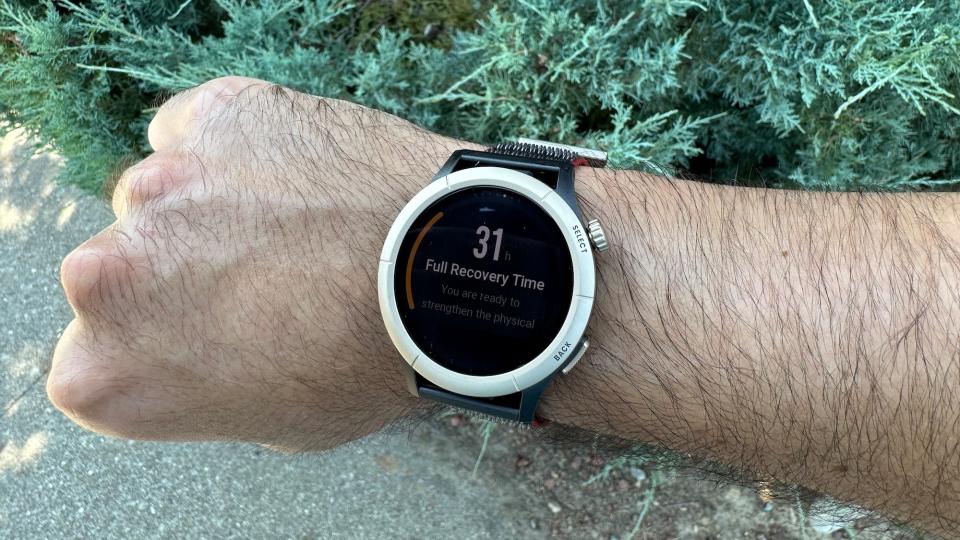
The Amazfit Cheetah Pro targets a very specific kind of runner. They're someone who wants running guidance to get fit without having to spend a bunch of time looking at data.
They don't want to give up on Bluetooth calling, but they don't mind missing out on other traditional smart apps that you'd get on a Wear OS watch.
They want a long battery life and AMOLED display without the cost of something like the Garmin Forerunner 265, while something cheaper like the Garmin Forerunner 55 or COROS PACE 2 with useful training tools just doesn't have the bells and whistles they want.
If you fall into this camp, and you're unwilling to spend a little extra on a Garmin or COROS that will compromise in other ways but give you more useful fitness data, the Amazfit Cheetah Pro is at least worth considering.
